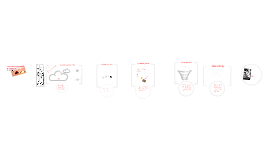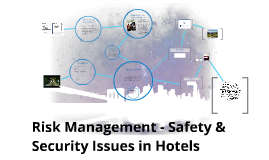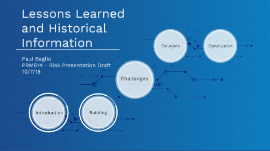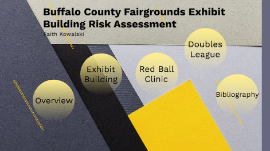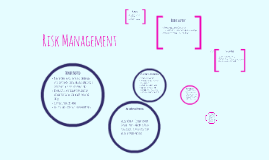Risk Management Presentation
Transcript: Lessons Learned and Historical Information Paul Baglio PRM614 - Risk Presentation Draft 10/7/18 Introduction Introduction Organizational Process Assets Records, text documents, databases At the close of phases vs. projects (Rowe & Sikes, 2006) LL's/Historical Info Lessons Learned / Historical Information / Project Reviews Lessons Learned (LL's) Historical Information Project Reviews Benefits gained from the process of performing a project. Positives and negatives of the project. Recorded formally and informally. Broader term covering a variety of information collected from a project Budgets, old risk documents, data, lists, checklists, project plans. More Structured Helpful for updating lessons learned and historical information. Be conducted regularly through the project. More frequent updates to lessons learned database. (PMI, 2017) Why LL's Why Project environments are not always the best environments for learning (Herbst, 2017). Lessons learned can create inputs used in project risk management. When used properly, lessons learned can facilitate learning across project teams and throughout organizations. Building Building Lessons Learned Document Reviews Document Reviews Using historical information from past projects in your risk reviews Review from similar projects - Cost, schedule baselines from start to final revision Risk Registers, Matrices, and risk audit reports Usually low effort for the project manager, if there are reviewers. Ensure similar lessons are captured from the new project. (Pritchard, 2015; El-Jardali, Lavis, Moat, Pantoja, & Ataya, 2014) Conducting Post-Project Reviews Conducting Post-Project Reviews Four dimensions to consider when building lessons learned: When: throughout the project when possible, regular meetings, end of project What about: tasks with minor problems, tasks with major problems, tasks that met expectation. How Know: comparing performance to plan, remembering which tasks to create lessons learned about What is included: the original plan, the results, the problems, tasks that went well. (Carillo, Harding, & Choudhary, 2011) Opportunity to improve project performance. Promote organizational learning. Build a larger database to create future project risk documents. Challenges Challenges Often filed away and never used or seen again. Project guidelines should be developed to use them in risk management. (Pritchard, 2015; Carrillo, Harding, & Choudhary, 2011) Lessons learned are commonly built, but not used effectively. When companies do attempt to review lessons learned in their document reviews or risk meetings, there can be too much information to sift through and use effectively. Often, lessons learned are completely overlooked for future projects within organizations. (Matthies, 2017; PMI, 2017) Solutions Solutions Conference Paper Conference Paper Prepare for lessons learned session/hold session. Should be facilitated by someone other than the PM or be summarized by someone other than the PM. Document/Share findings. Allow time for response. Publish and save with project documentation. Analyze lessons learned. Process improvements or training identified. Store lessons learned - Best practice to store both with project documents and on a shared drive. Retrieve lessons learned - should at least have key word search capability. (Rowe & Sikes, 2006) Text-Mining Text-Mining Using computer algorithm, Matthies (2017) separated lessons learned into 13 categories by likelihood and impact. Was able to come up with risk recommendations which were essentially a compiled list from past project recommendations. Process could save time and allow all past projects to be converted to current organizational knowledge and used for the future. Matthies (2017) stresses that the algorithm can still be subjected to bias, and the results must still be analyzed by a subject matter expert. Conclusion Conclusion Summary Conclusion Lessons learned can help organizations improve performance. Document reviews and post-project reviews can assist in building lessons learned. Lessons learned are difficult to utilize, but making them an active part of the project process can improve results. Tools are being developed to help project managers analyze lessons learned data to better understand future project risks. References References Carrillo, P., Harding, J., & Choudhary, A. (2011). Knowledge discovery from post-project reviews. Construction Management & Economics, 29(7), 713–723. https://doi-org.xxproxy.smumn.edu/10.1080/01446193.2011.588953 Pritchard, C. L. (2015). Risk Management Concepts and Guidance. Boca Raton, FL: Taylor & Francis Group Project Management Institute (PMI). (2017). A guide to the project management body of knowledge (PMBOK® Guide) (6th ed.). Newtown Square, PA: Author. Herbst, A. S. (2017). Capturing knowledge from lessons learned at the work package level in project engineering teams. Journal of Knowledge Management, 21(4), 765–778.






